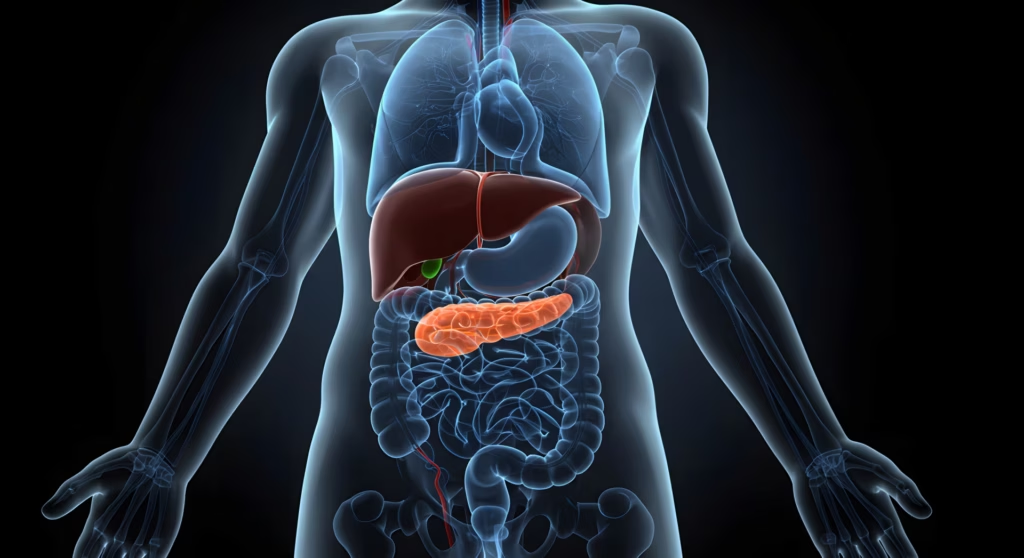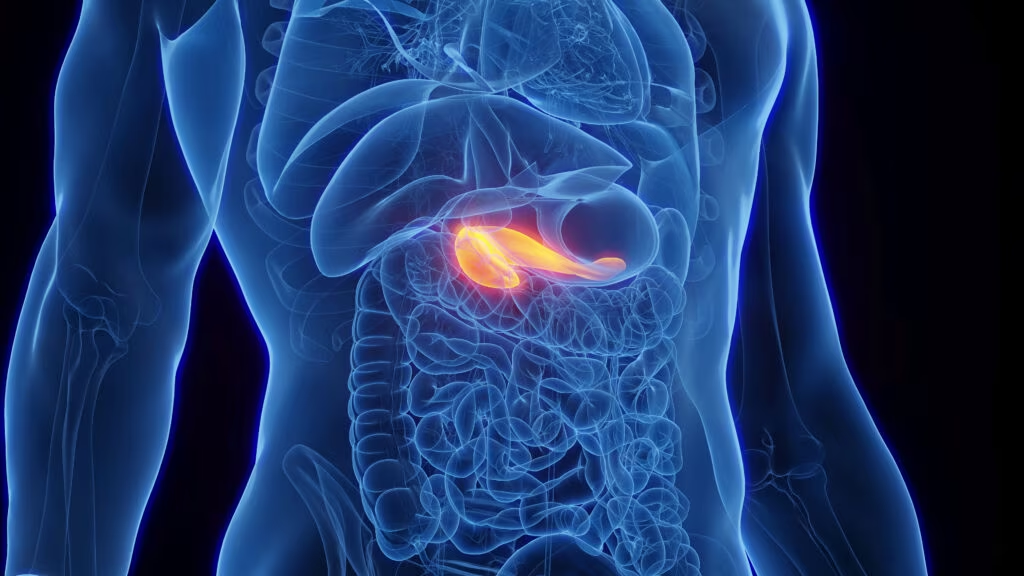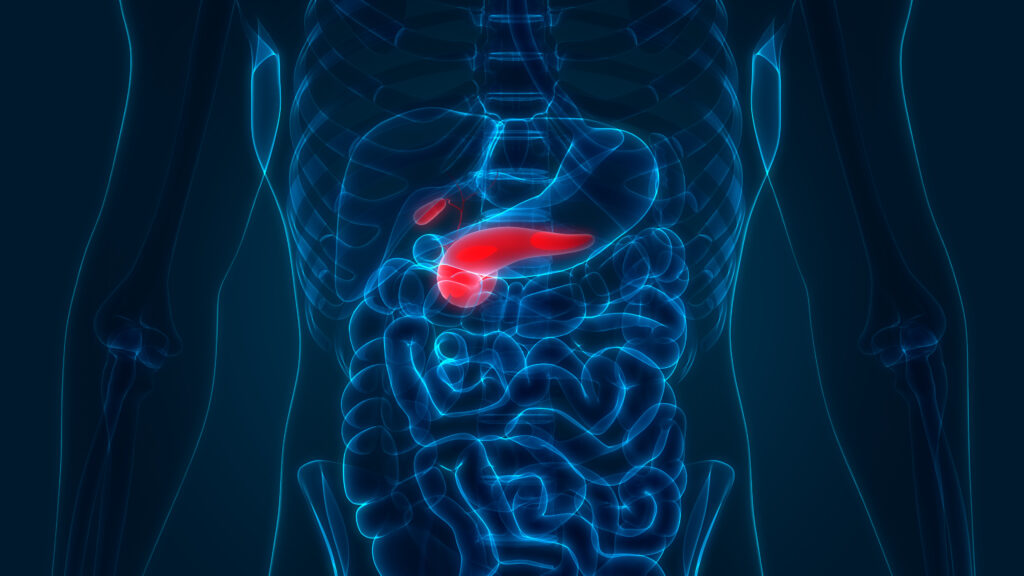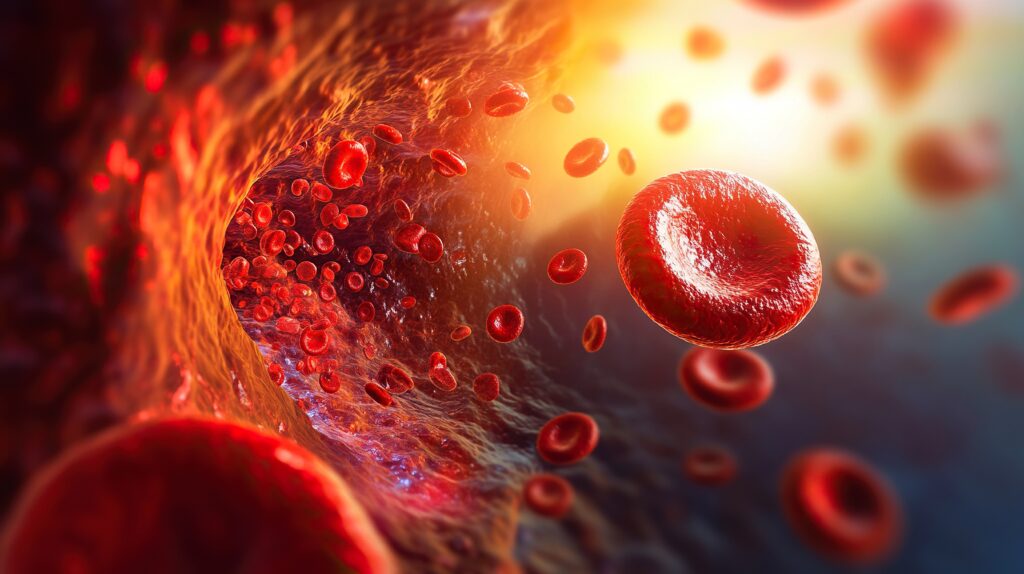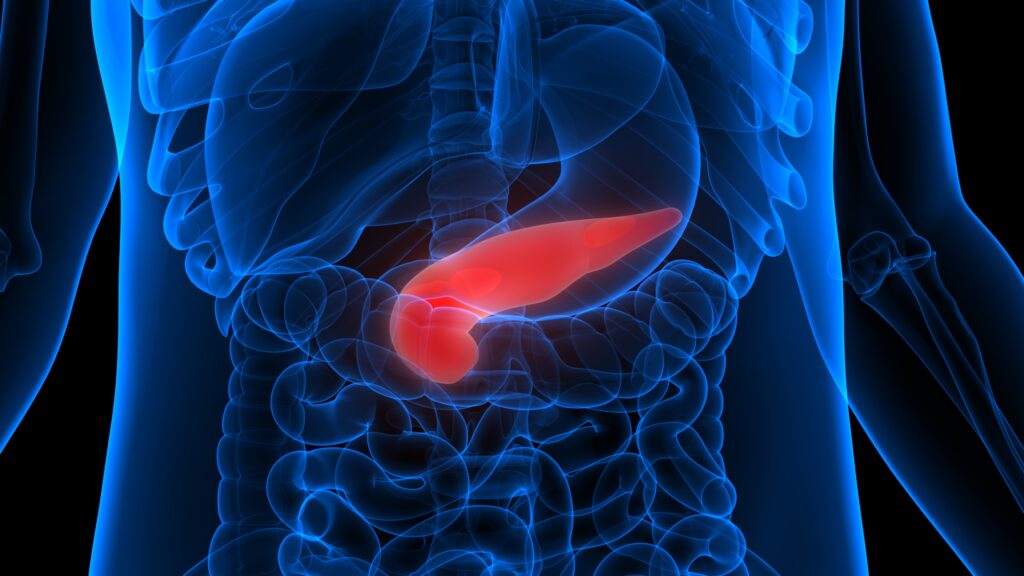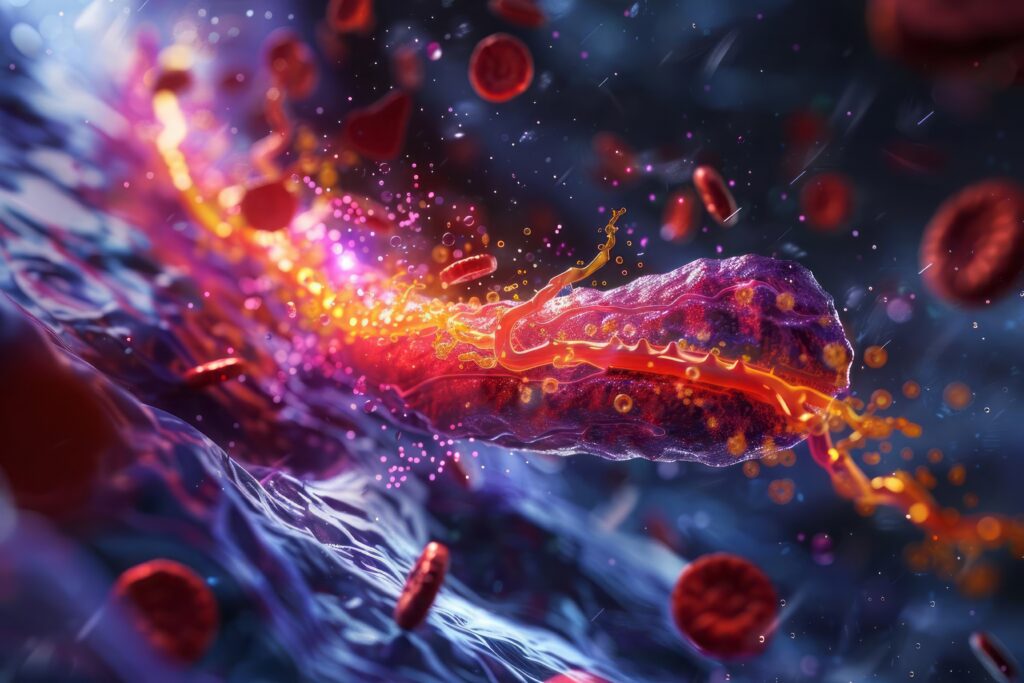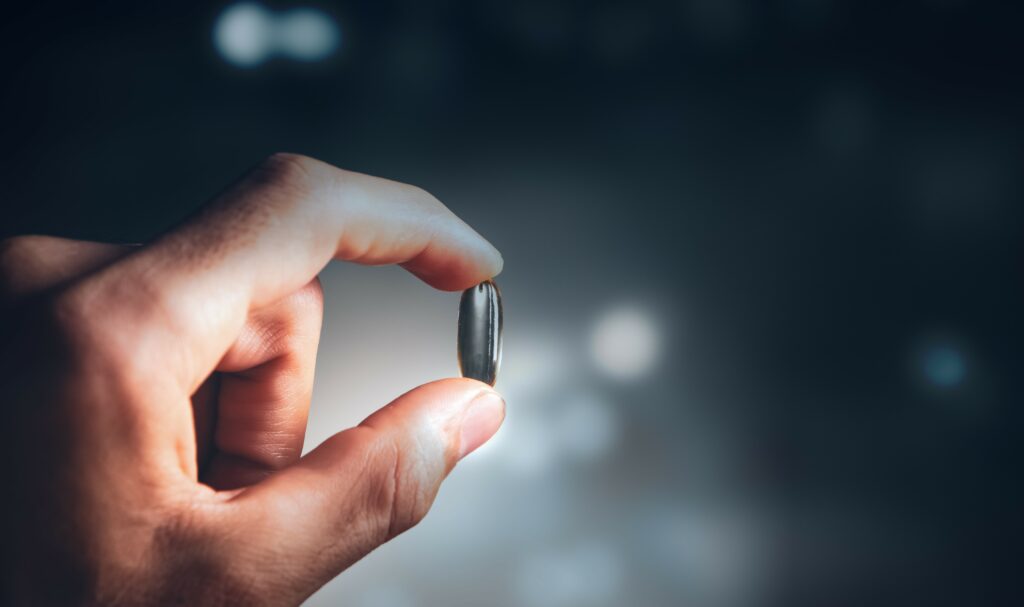Development of Human Insulins
Animal insulins extracted from the pancreas tissue were used for therapy from 1922 until 1974, when semisynthetic human insulin became available in limited quantities by modification of animal insulins.1–4 This development was based on identification of the structure of human insulin from human autopsy material. Reference material was obtained by total chemical synthesis and by small quantities of purified human insulin extracted from autopsy material.5 A more efficient solution to provide human insulin of high purity and increased quantity became available when recombinant DNA technology was applied to biosynthesis of human insulin on an industrial scale.6,7 The genetic information for a proinsulin fusion protein was inserted into bacteria (Escherichia coli) or in yeast (Saccharomyces cerevisiae, Pichia pastoris). Post-translational processing and extensive purification of the final drug product obtained biologically active human insulin. A process for recombinant human insulin was initiated by Genentech in 1978,8 and production at an industrial scale was developed by Eli Lilly.9,10 The company obtained marketing authorisation in the US and European countries in 1982 (Humulin®) for a drug product produced in E. coli. NovoNordisk obtained marketing authorisation in 1991 for a recombinant human insulin produced by a different process of biosynthesis in yeast.11–13 Brand names at that time were Novolin® in the US and Actrapid®, Protaphane® and Mixtard® in Europe (see Table 1). Another method for recombinant human insulin in yeast (P. pastoris) was described later.14,15 Sanofi developed recombinant human insulin (drug substance) in 1995 using the E. coli process and obtained marketing approval for the insulin formulations in 1997 (Insuman®).
In each case, recombinant human insulin replaced the previously produced semisynthetic animal insulins. The change required a prolonged test period for the bioequivalence of the new insulin formulations based on recombinant human,16,17 comparing them with semisynthetic human insulin obtained by modification of animal insulins.9 Bioequivalence was established by clinical pharmacology studies in healthy volunteers (phase I) using the insulin clamp procedure.18 In subsequent clinical studies, patients with diabetes were safely and effectively transferred from semisynthetic human insulin to recombinant human insulin, with no change in insulin dose range.19–21 There was a prolonged period of discussion about differential responses in perception of hypoglycaemia,22 a debate that required specific studies to resolve this controversy.23
Recombinant human insulin developed by Eli Lilly and Sanofi (E. coli fermentation), and by NovoNordisk (S. cerevisiae fermentation), replaced the semisynthetic insulins previously marketed by each of the three originators (see Table 1). The current regulatory process for drug approval of insulin formulations requires bioequivalence studies (phase II) comparing a marketed insulin product (reference compound) with a new product developed by a different company.24
The insulin drug substance (active pharmaceutical ingredient) is processed to formulations addressed as regular human insulin (short acting), human neutral protamine Hagedorn (NPH) insulin (intermediate acting) and premixed insulins (combinations of regular human insulin and NPH insulin, for clinical convenience). The pre-mixed insulins supply regular insulin at mealtime and NPH insulin for extended basal support. There has been a wide range of combination insulins containing 10 % up to 50 % of regular insulin. A ratio of 30 % regular and 70 % NPH insulin is frequently used, e.g. Humulin 30/70, Novolin30R, Insuman Comb 30.
Biotechnology of Human Insulin Production
Production of recombinant human insulin starts with the insertion of a gene encoding the precursor protein pre-pro-insulin into a DNA vector that is transferred into a host (see Figure 1).25 During the product synthesis, the culture and fermentation conditions are controlled tightly to optimise yields.26 A fusion protein obtained by fermentation is converted to bioactive human insulin by post-translational processing.27 The final step in the manufacturing process is the multi-step purification of human insulin until the necessary high extent of purification is obtained (see Figures 2A and 2B). This is followed by crystallisation of the final product and pharmaceutical manufacture of the different insulin products (see Figures 1 and 2B).
The process of obtaining human insulin by biosynthesis was subsequently adapted for production of insulin analogues with modified amino acid sequence and different time–action profiles (see Table 1). Insulin analogues are manufactured in a similar process by biosynthesis of precursor insulin proteins and subsequent post-translationalmodification and purification. Different insulin analogues are obtained by alteration of the encoded gene sequence.28–30 Fast-acting (rapid acting) analogues provide rapid absorption from the subcutaneous (sc) injection site within 10 to 15 minutes (lispro, aspart, glulisine insulin). Longacting analogues provide basal insulin support for more than 24 hours (insulin glargine, insulin detemir). NPH insulin is a suspension of human insulin in protamine (Humulin N, Novolin N, Insuman Basal) with the duration of action of 16 to 20 hours and a distinct peak of action (intermediate acting), whereas insulin glargine has a duration of action of more than 24 hours and a flat time–action profile activity.31,32
Biosimilar human insulins are designed to be closely similar to one of the reference insulin products. The regulatory pathways for approval of these biosimilar insulins may differ between countries, the European approval process has been established and applied (WC500144124). Biosimilar insulins have to overcome numerous regulatory hurdles in terms of bioequivalence and clinical studies to establish safety and efficacy.33–37
Insulin Formulations
Recombinant human insulin (insulin human INN) is the starting material (active pharmaceutical ingredient [API]) for several insulin formulations, which may differ considerably in biological profile and clinical utility. Three types of insulin formulations are currently marketed:
- Regular (short acting): Regular insulins (Humulin R, Novolin R, Actrapid, Insuman Rapid) are a solution for injection at mealtime (prandial insulin), by sc injection 15 to 30 minutes before the meal. There are slightly different clinical recommendations for the injection-to-meal interval of regular insulin, and for pre-mixed insulins, which contain 25 % to 30 % of soluble insulin. There are options of using a vial and syringe (at low cost) or patient-convenient technology using insulin pens that contain a cartridge (replaceable) and more advanced insulin pens that are disposable after use.38,39 Patients need to be informed about specific aspects of insulin injection.40 The insulin pens have now reached a level of clinical convenience and reliability that makes them the preferred application system.38 For the Insuman injection, for example, different types of pens are available such as SoloStar (disposable) and AllStar, a re-usable pen affordable for developing countries.39
- NPH (intermediate acting): Human NPH insulin (Humulin N, Novolin N, Insulatard, Protaphane, Insuman Basal) is a suspension that differs considerably from the solution for injection, because it needs special handling. Every time before each injection, NPH insulin needs to be re-suspended, either by rolling the NPH vials or by tipping over (insulin pen with the NPH cartridge) 10–20 times before each injection. Consistent and reliable use by the patient is necessary; patient education on how to achieve consistent resuspension is important.41,42
- Pre-mixed human insulins (fixed ratio of regular and intermediate acting insulin): Such preparations (Humulin 30/70 M3, Novolin 30/70, Mixtard 30, Insuman Comb 30 are pre-mixed insulins at a 30/70 ratio) consist of soluble insulin and NPH insulin at a fixed ratio of 15/75 up to 50/50. The ratio of 30/70 is frequently prescribed. The pre-mixed insulins are injected once or twice per day (qd or bid) in patients with a regular daily life and stable insulin requirements. Patient education about injection40 and re-suspension before each injection is essential for a consistent clinical effect, in a similar manner as for the basal NPH insulin formulations.
The pharmaceutical forms of vials, re-usable pens with cartridge and disposable pens are addressed as insulin presentations.
Bioequivalence Studies
Euglycaemic clamp studies are a well-established instrument in clinical pharmacology to assess the exposure and activity profiles of different insulin compounds or formulations.9,43,44 The bioequivalence of Insuman formulations was assessed by clinical studies as requested by the European Medicines Agency (Studies A1–4, EMA 2005) using formulations of a marketed comparator human insulin (included in this article are comparators of 100 U strength from the Humulin family [Lilly]). In one study, Insuman Rapid and Humulin R were compared by intravenous injection. (Study A1: Comparison of the pharmacodynamics and pharmacokinetics of HOE 31 HPR and HOE 31 HGT [Insuman Rapid, biosynthetic human insulins, applicant] and biosynthetic human insulin [human insulin fast acting, ATC code: A10AB01] by using the euglycaemic clamp technique.45
A randomised, double-blind, cross-over pharmacokinetics (PK)/ pharmacodynamics (PD) euglycaemic clamp study was carried out in healthy volunteers (n=18) for 6 hours. A single intravenous dose of 0.15 IU/kg Insuman Rapid or Humulin R was injected and blood glucose was measured every 3 minutes up to 30 minutes and every 5 minutes thereafter up to the end of the clamp period. Data showed that Insuman Rapid was equivalent to Humulin R in terms of PD effect and PK profile (see Figure 3). Similarly, equivalence was also demonstrated in an euglycaemic (4.6 mmol/l) clamp study in 24 healthy volunteers for sc injection of a single dose of 0.3 IU/kg Insuman Rapid or Humulin R over a period of 10 hours (see Figure 4). (Study A2: Comparison of the pharmacodynamics and pharmacokinetics of HOE 31 HPR [Insuman Rapid, biosynthetic human insulin, applicant] and biosynthetic human insulin [human insulin fast acting, ATC code: A10AB01] using the euglycaemic clamp technique.46
Insuman Basal, the human NPH insulin formulation, was compared with Humulin N (Huminsulin Basal) in a PK/PD clamp study of 16 hours duration for single-dose sc injection of 0.3 IU/kg of each basal insulin and equivalence was demonstrated (see Figure 5). (Study A3: Comparison of the pharmacodynamics and pharmacokinetics of HOE 36 HPR [Insuman Basal, biosynthetic human insulin, applicant] and biosynthetic human insulin [human insulin intermediate acting, ATC code: A10C01] using the euglycaemic clamp technique).47
A frequently prescribed pre-mixed insulin formulation at that time was Humulin Profil III (also designated Humulin 70/30 in the US). The combination insulin, Insuman Comb 30 with a ratio of 30/70 of regular versus NPH human insulin was tested in an euglycaemic clamp study of 16 hours duration (Study A4, EMA 2005), by single-dose sc injection of 0.3 IU/kg Insuman Comb 30/70 with Humulin 30/70 (Huminsulin Profil III) as the comparator (see Figure 6). (Study A4: Comparison of the pharmacodynamics and pharmacokinetics of HOE 35 HPR [human intermediate 30 % dissolved insulin and 70 % crystalline insulin, biosynthetic human insulin, applicant] and biosynthetic human insulin [human insulin intermediate acting combined with fast acting, ATC code: A10D01] using the euglycaemic clamp technique).48
Bioequivalence was established in these phase II studies by the time–action profile and the PK/PD data for the Insuman formulations and the comparator insulin formulations marketed at that time. A clinical comparison confirmed similar efficacy and safety for Insuman formulations and Humulin formulations. A bioequivalence study comparing Novolin R and Insuman Rapid also showed bioequivalence. This raises the question about clinical relevance of such findings, when similar insulin formulations by different manufacturers are approved and available in specific countries. When switching from one human insulin product to another, clinical monitoring is advised and essential, even if a similar formulation is considered for use. In clinical practice, for the patient a change of the insulin product of one supplier to another requires full information of physician and patient. An initial period of monitoring after the change is recommended, to establish that glycaemic control remains unchanged, despite change of the human insulin product.40 This is of particular relevance for pre-mixed and NPH-insulins, because the time–action profile may change more than for a regular insulin formulation. Clinical consideration and careful monitoring is even more advised when changing from a human insulin formulation to an insulin analogue. Reasons for the change may be the requirement for more rapid absorption before a meal (rapid-acting insulin analogues), a more balanced basal insulin profile with extended duration (long-acting insulin analogues) and reduced frequency of injections. In each of these instances – when changing to a different insulin – the rate and extent of absorption will change and an extended glucose monitoring is essential after the change.
Outlook for Therapy with Recombinant Human Insulin
For many years, recombinant human insulin has been the standard of care. The formulations for meal-time injection (soluble), basal support (NPH) and conventional therapy (pre-mix combination) are well established and a range of convenient presentations is available (disposable and reusable insulin pens). In many countries, human insulin formulations are the preferred options for type 1 diabetes therapy based on availability and affordability. In type 2 diabetes, there is a wide range of initial options for therapy, early insulin therapy remains the target when glycaemic control cannot be achieved otherwise. The critical matter in many countries is reimbursement and pricing. The economics of scale of human insulin production and pharmaceutical processing of formulations are to be considered. Regular human insulin and NPH insulin remain the standard of care in many countries. There is a wide range of insulin analogues available with specific advantages of fast absorption and long duration of action, with cost of therapy being an important factor. Efficacy of diabetes therapy with recombinant human insulin formulations is well established, this is the predominant concern for diabetes therapy in countries where affordability remains an important selection factor.


